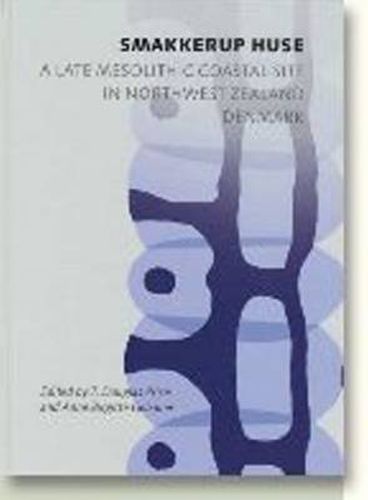Readings Newsletter
Become a Readings Member to make your shopping experience even easier.
Sign in or sign up for free!
You’re not far away from qualifying for FREE standard shipping within Australia
You’ve qualified for FREE standard shipping within Australia
The cart is loading…






Traditionally, the Mesolithic has been regarded a time of cultural regression in northern Europe, relieved only around 4000 BCE when the enlightened villagers of the Neolithic arrived on the scene, bringing with them the beginnings of agriculture. But new evidence in the last 30 years has led archaeologists to think of the early postglacial foragers that lived in the Mesolithic as complex, sedentary coastal dwellers who made the era a time of innovation, interaction and successful adaptation to a rapidly changing environment. The excavations at Smakkerup Huse help to flesh out this revised portrait. Al though the settlement area (5000 to 3900 BCE) on land had suffered marine erosion, submerged deposits adjacent to the settlement included a midden and a fishing and boat-landing area in excellent condition, with numerous organic materials surviving intact. Deposits included fire-cracked rock, charcoal, oyster shells, amber and teeth pendants, a complete rack of antlers, pieces of dugout canoes and a bow, pointed wooden stakes, large pieces of bark and fungus, thousands of hazelnut shells and fishbones, a fish trap fragment, fishhooks, worked bone and antler tools, potsherds and more than 350 projectile points. The most intriguing artefact was a small painted cobble, a type previously unknown from the Danish Mesolithic. The site also yielded remains from some of the earliest domestic cattle in Denmark, raising important questions about foraging adaptations and the transition to agriculture. Besides specialist reports from geology, archaeozoology, palaeoethnobotany, archaeological chemistry and conservation science, there are useful chapters describing the Mesolithic in southern Scandinavia and situating the Smakkerup Huse finds within the context of this time of critical transition.
$9.00 standard shipping within Australia
FREE standard shipping within Australia for orders over $100.00
Express & International shipping calculated at checkout
Traditionally, the Mesolithic has been regarded a time of cultural regression in northern Europe, relieved only around 4000 BCE when the enlightened villagers of the Neolithic arrived on the scene, bringing with them the beginnings of agriculture. But new evidence in the last 30 years has led archaeologists to think of the early postglacial foragers that lived in the Mesolithic as complex, sedentary coastal dwellers who made the era a time of innovation, interaction and successful adaptation to a rapidly changing environment. The excavations at Smakkerup Huse help to flesh out this revised portrait. Al though the settlement area (5000 to 3900 BCE) on land had suffered marine erosion, submerged deposits adjacent to the settlement included a midden and a fishing and boat-landing area in excellent condition, with numerous organic materials surviving intact. Deposits included fire-cracked rock, charcoal, oyster shells, amber and teeth pendants, a complete rack of antlers, pieces of dugout canoes and a bow, pointed wooden stakes, large pieces of bark and fungus, thousands of hazelnut shells and fishbones, a fish trap fragment, fishhooks, worked bone and antler tools, potsherds and more than 350 projectile points. The most intriguing artefact was a small painted cobble, a type previously unknown from the Danish Mesolithic. The site also yielded remains from some of the earliest domestic cattle in Denmark, raising important questions about foraging adaptations and the transition to agriculture. Besides specialist reports from geology, archaeozoology, palaeoethnobotany, archaeological chemistry and conservation science, there are useful chapters describing the Mesolithic in southern Scandinavia and situating the Smakkerup Huse finds within the context of this time of critical transition.